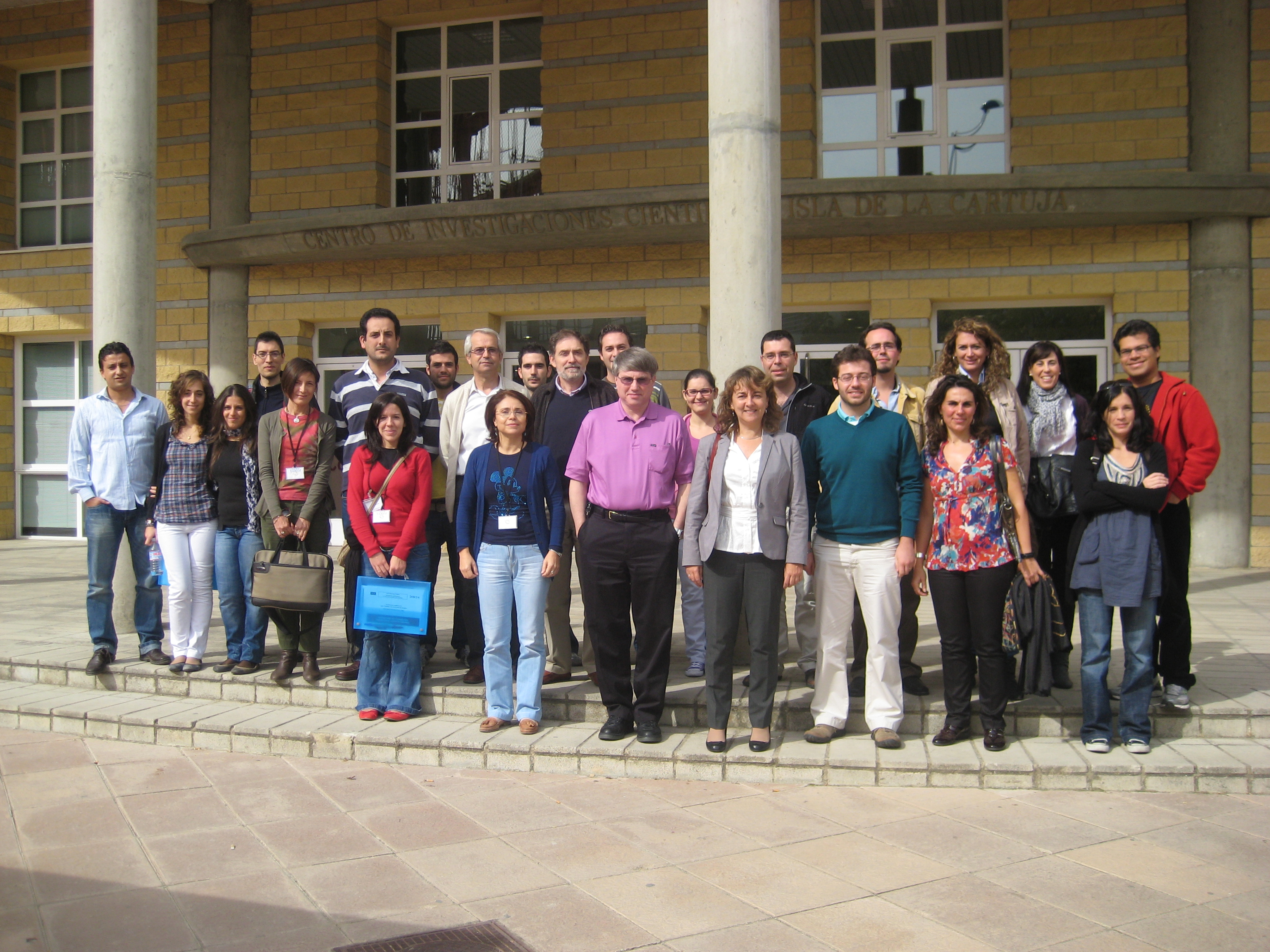For several years now, synchrotron radiation sources have become one of the most sought-after major facilities in Spain by scientists from fields as diverse as physics, chemistry, biology and medicine, as well as for the characterization and analysis of all types of materials. For this reason, in 1994 the research center Instituto de Ciencia de Materiales de Sevilla (ICMS) started up a postgraduate course specifically dedicated to demonstrating the possibilities offered by these sources. This course, entitled “Application of Synchrotron Radiation to the Characterization of Materials”, was held at the cicCartuja from October 27 to 29, 2010.
Among the scientists who participated in this course was a large representation of ICMS researchers, all of them with extensive experience in the use of these sources, including Asunción Fernández, Juan Pedro Holgado, Juan Pedro Espinós, Agustín Rodríguez González-Elipe, Alfonso Caballero and Adela Muñoz Páez, the latter two directors of the course. Carlos Frontera, from the Institute of Materials Science of Barcelona, and María Cruz García, from the Institute of Structure of Matter of Madrid, both CSIC centers, participated as lecturers from outside the center. Also present were Dr. Neville Greaves, from Aberystwyth University (Wales); Igor Sics, who works at the ALBA synchrotron radiation source in Barcelona; Gema Martinez-Criado, head of the microscopy area of the ESRF, the European synchrotron radiation source, located in Grenoble; and Stephen R. Wasserman, expert in the study of the synchrotron radiation source. Wasserman, an expert in the study of protein crystallography and head of the line that the U.S. pharmaceutical company Eli-Lilly has at the APS synchrotron radiation source, located in Chicago.
In its beginnings, this course on the “Application of Synchrotron Radiation to Materials Characterization” was held at the ICMS every two years. However, given the relevance that this type of facility has acquired in the last decade, especially following the approval of the construction of the ALBA Synchrotron in Barcelona, it has been held annually since 2001, and has become a classic for Spanish researchers interested in the use of synchrotron radiation. In fact, as Adela Muñoz points out, the Materials Science Institute of Seville is one of the CSIC centers that hosts “the most users of synchrotron radiation at national level, with several research groups that use it more or less regularly”.

A course organized by the ICMS introduces some twenty young people to synchrotron radiation techniques


